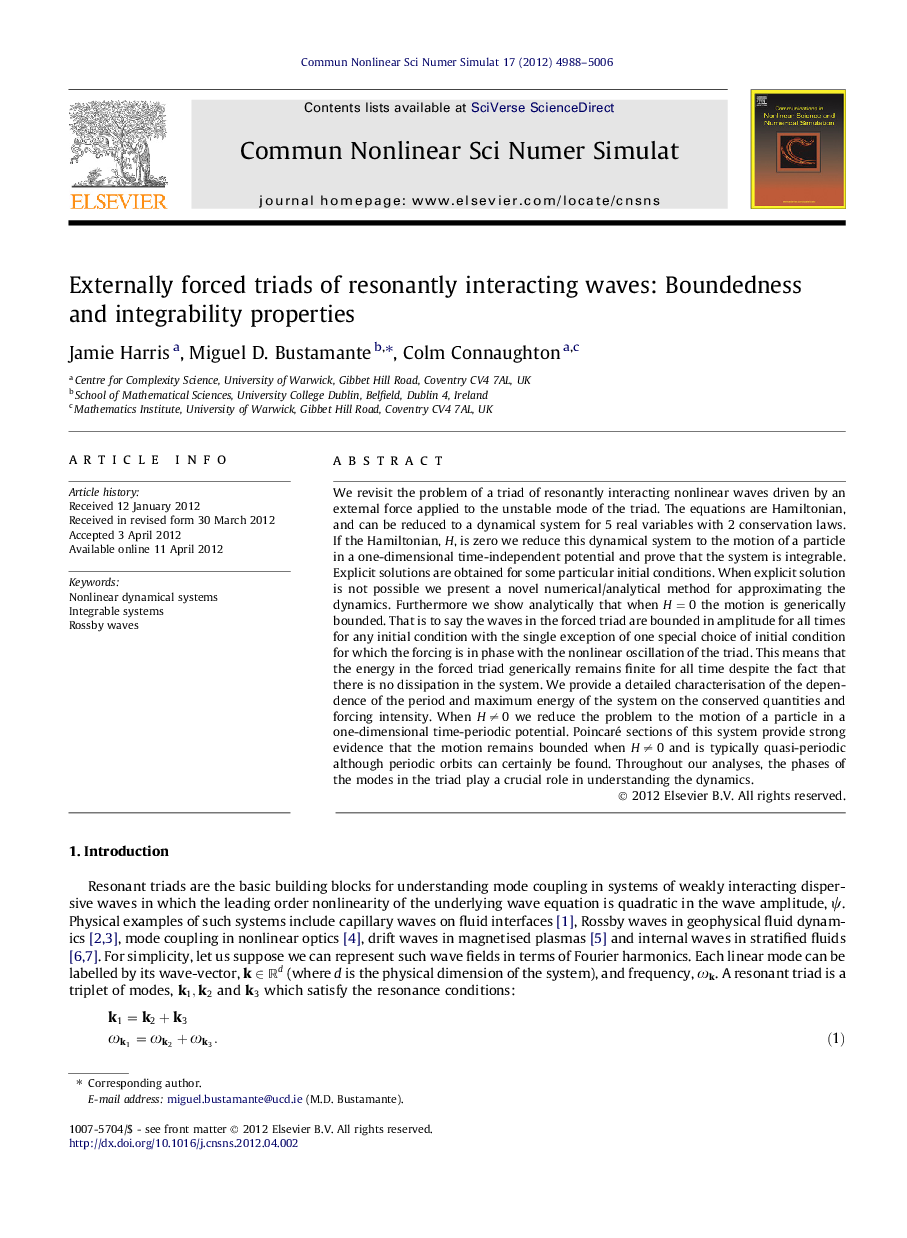| Article ID | Journal | Published Year | Pages | File Type |
|---|---|---|---|---|
| 767023 | Communications in Nonlinear Science and Numerical Simulation | 2012 | 19 Pages |
We revisit the problem of a triad of resonantly interacting nonlinear waves driven by an external force applied to the unstable mode of the triad. The equations are Hamiltonian, and can be reduced to a dynamical system for 5 real variables with 2 conservation laws. If the Hamiltonian, H , is zero we reduce this dynamical system to the motion of a particle in a one-dimensional time-independent potential and prove that the system is integrable. Explicit solutions are obtained for some particular initial conditions. When explicit solution is not possible we present a novel numerical/analytical method for approximating the dynamics. Furthermore we show analytically that when H=0H=0 the motion is generically bounded. That is to say the waves in the forced triad are bounded in amplitude for all times for any initial condition with the single exception of one special choice of initial condition for which the forcing is in phase with the nonlinear oscillation of the triad. This means that the energy in the forced triad generically remains finite for all time despite the fact that there is no dissipation in the system. We provide a detailed characterisation of the dependence of the period and maximum energy of the system on the conserved quantities and forcing intensity. When H≠0 we reduce the problem to the motion of a particle in a one-dimensional time-periodic potential. Poincaré sections of this system provide strong evidence that the motion remains bounded when H≠0 and is typically quasi-periodic although periodic orbits can certainly be found. Throughout our analyses, the phases of the modes in the triad play a crucial role in understanding the dynamics.
► We present an in-depth analysis of the triad equations driven by external forcing. ► The dynamics are integrable and bounded, for a relevant subset of initial conditions. ► Explicit solutions and novel approximation methods are presented. ► In the general case we map the problem to a 1D particle in time-dependent potential. ► Poincaré cuts provide strong evidence for all-time boundedness in the general case.
